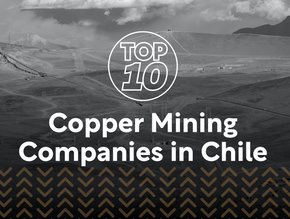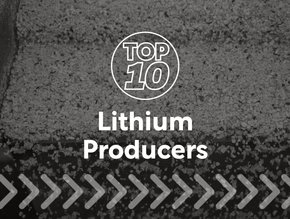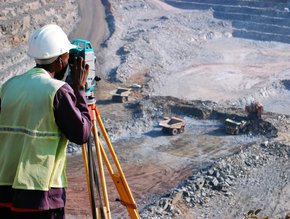Top 10 risks for the mining industry

In the 12-year history of KPMG's global mining risks and opportunities research, 2022 marks quite a moment. Every year, commodities risk has been at the top of the industry’s risk radar. But now, that has been displaced. So, what has overtaken it?
For an industry that inherently operates over the long-term, these shifts in a short space of time are striking. They underline the extent to which climate change related issues and ESG more broadly are reframing corporate priorities in mining, as in almost every business sector.
Its research underlines how much has happened in just one year. The pandemic has disappeared from the top ten. Issues relating to geopolitics – political instability, nationalisation, global trade wars – loom large. And with events in Eastern Europe unfolding, they will be even more top of mind now.
It all adds up to a landscape filled with both risk and opportunity. Click through to see the top 10 risks drawn from KPMG's Global Mining Outlook 2022 report.
10: Regulatory and compliance changes/burden
In a welcome move, the pandemic has disappeared from the top 10, after leaping in at number two last year.
Now it seems like the industry regards COVID-19 as something it can incorporate into business as usual as global demand for commodities to power the economic recovery builds.
However, risks that arise from externalities, such as environmental regulations and geopolitical factors, are really taking up executive thinking time. Regulatory and compliance issues retain 10th spot in the annual risk rankings.
09: Talent crisis
The 'war on talent' is a new entry in the top 10 rankings.
There is a sentiment that the mining industry needs a new wave of talent to fulfil a range of specialised and/or technology-centric roles, and these needs are only getting broader: data analysts, computer scientists, environmental scientists, heritage experts, and water management specialists, among others.
The KPMG and Eversheds Sutherland report on Climate Change and the People Factor found that technical skills to manage climate change and carbon markets expertise are in the most demand in the Energy and Natural Resources sector.
08: Supply chain risks
Supply chain issues, the eighth top risk, have been driving a rise in the cost of materials and supplies, while economies globally are beginning to wrestle with inflationary pressures. In KPMG's view, energy costs for businesses are rocketing and there is also upward pressure on wages. Over half (54%) of executives agree that some consolidation is needed in the industry to manage costs - and rising inflation will only add to this.
07: Permitting risk
Permitting risk has dropped one place but remains a key issue for the mining community.
It takes on average seven to 10 years to secure permits needed to commence operations in the US, whereas in Canada and Australia, countries with similarly stringent environmental regulations, the average permitting period is two years.
06: Ability to access and replace reserves
The ability to access and replace reserves has jumped three places in the risk rankings, and is highlighted as one of the three key risks in Canada. Sustainability and ESG are now paramount concerns and businesses are feeling the impact of growing geopolitical volatility in a world of uncertain power dynamics.
05: Global trade conflict
KPMG's research underlines how quickly political scenarios and risk landscapes can change in real time.
On a regional basis, executives in EMEA were "least worried about political instability" while those most worried by political instability were respondents in Latin America, which is consistent with The Economist’s recent Democracy Index findings for the region.
The precarious economic situation with Russia, Ukraine and the international community, with sanctions imposed and the prospect of further restrictions, is sure to be another primary concern in the months ahead.
04: Political instability/Nationalisation
Political instability and nationalisation has jumped three places in the risk rankings.
The most precious commodity for global businesses to plan, invest and grow is stability, but unfortunately this is becoming a rare commodity in today’s fractured world.
"We believe more time, money and effort will have to be invested by mining company boards and strategy teams to help navigate political minefields," the report states.
03: Community relations and social license to operate
Up one place in this year's risk rankings, community relations and social licensing are taking on greater importance.
In the last few years, various incidents have shown that social license to operate is hard won and easily lost - and in a social media age, the repercussions can spread globally at lightning speed.
In KPMG's view, it is anticipated that continued and increased engagement with communities - understanding and responding to concerns and delivering investment programs that enhance the quality of community life - will be key.
02: Commodity price risk
Falling from top spot in last year's rankings, commodity price risks nonetheless remain a primary issue for mining companies - especially for those operating in the US, Latin America and Australia.
“From what we’ve observed, commodity prices are sky high - if volatile - and this is generally underpinning industry confidence,” observes Trevor Hart of KPMG.
01: Environmental risks including new regulations
The non-stop rise of ESG is reflected in environmental risks jumping from fifth place to first in a year.
Nearly three-quarters (72%) agree or strongly agree that ESG will be a cause of major disruption in the mining industry over the coming three years.
Moreover 84% agree or strongly agree that success in the long run will become increasingly dependent on defining success in more than just financial terms, requiring the need to look more holistically at stakeholder returns, including governments, communities and employees.
Nick Harridge of KPMG Australia, said: “Social and investor expectations towards ESG are pushing miners to invest in innovative ways and adapt at a faster pace. We expect the opportunity to commercialise new technologies will continue to fuel more innovation and investment, further increasing the pace of change. This is an exciting time for the mining industry.”
- Biden Ruling 'Threat to US Critical Minerals Mining'Supply Chain & Operations
- World Gold Council: Gold Miners 'Must Create ESG Value'Sustainability
- Green Steel Push 'Needs New Regulations and Incentives'Sustainability
- Bain: 'Inflation Dampening Mining Leaders' Net Zero Hopes'Sustainability






